Bottega Veneta, Ferragamo, and Marni Lead a Weird Milan Fashion Week
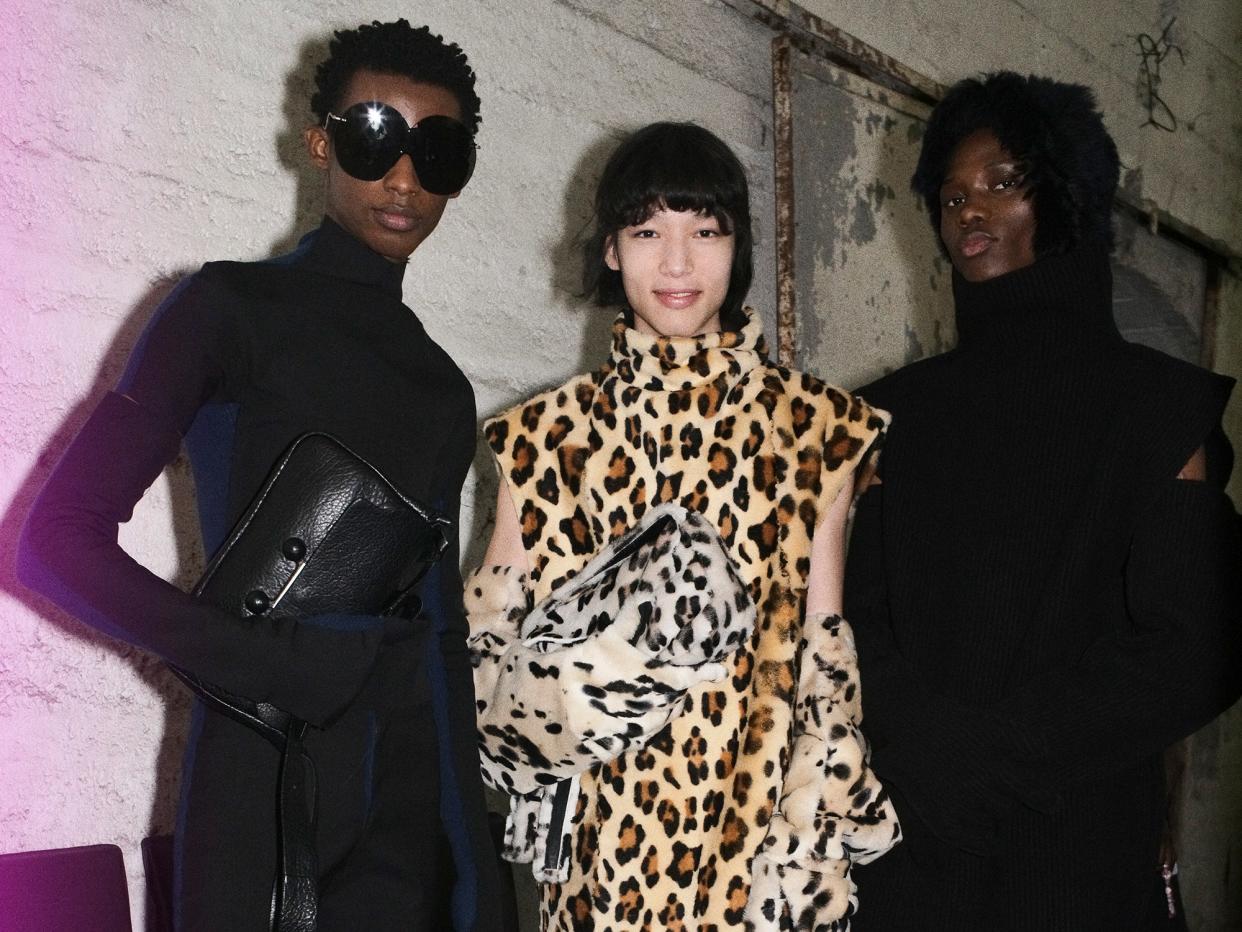
This is an edition of the newsletter Show Notes, in which Samuel Hine reports from the front row of the global fashion week circuit. Sign up here to get it in your inbox.
At the men’s fashion shows In January, I was struck by the fact that Italy doesn’t have a deep bench of breakthrough brands. Unlike in New York, London, Paris, Tokyo, and even Los Angeles, Milan doesn’t have the fizzy energy of a scene led by inventive young designers. As I wrote at the time, the delightfully off-kilter label Magliano is among vanishingly few new menswear labels on the rise in the spiritual home of sprezzatura. At the Sunnei show on Friday at the women’s edition of Milan Fashion Week, I was reminded that the label’s designers Simone Rizzo and Loris Messina also deserve credit for bringing a badly-needed sense of newness to the schedule. And weirdness, in a good way, a word not normally associated with the menswear capital that I'm calling Milan’s surprise trend of the season.
(Because people keep asking why I’m back in Europe: an increasing number of designers are skipping the men’s schedule in January and June to present co-ed collections on the women’s circuit, which runs in February and September. I get it—it’s more modern and certainly more economical to hold two shows a year rather than four. But your staunch Show Notes correspondent is starting to wonder why he pays rent in NYC.)
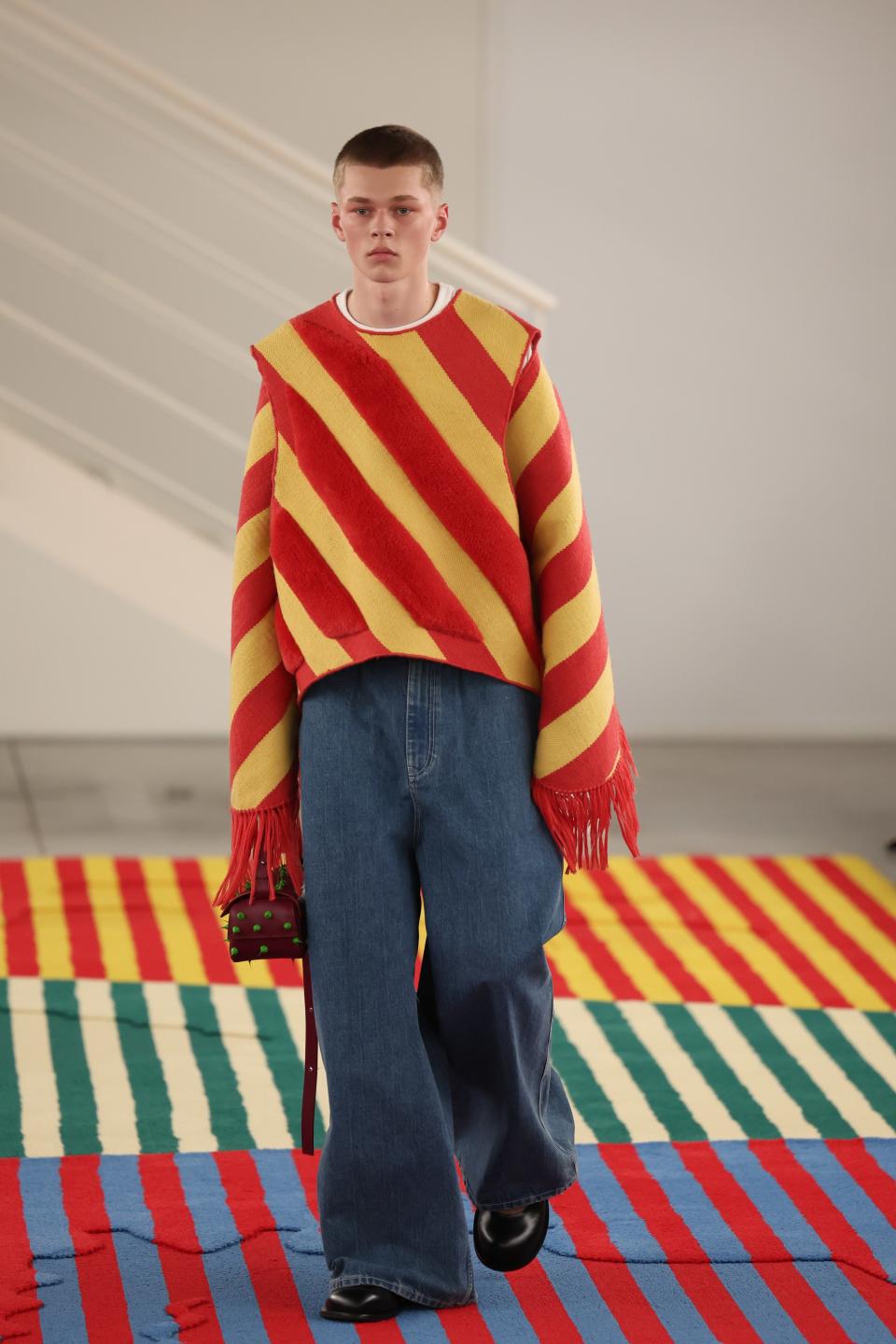
Sunnei - Runway - Milan Fashion Week - Womenswear Fall/Winter 2024-2025
Rizzo and Messina understand how to make noise for their growing brand, and Sunnei shows invite audience participation and exaggerate certain dimensions of the runway show. Last season, guests were given numbered paddles and encouraged to rate each look. I can be seen in about half of the Vogue Runway collection images giving out some high scores, and a handful of 1s and 2s. (I’m nothing if not honest.) This time, the soundtrack exposed the “inner thoughts” of each model as they hit the brightly-carpeted runway. “The world is on fire and we’re talking about fashion? These people are so superficial. I can’t do this anymore. Jesus. Look at them,” said one. “Try not to fall, walk straight. Fuck—the bag is falling,” went another. Others daydreamed about backstage trysts and stressed about what they would wear to go out that night.
You kind of had to be there, but it was extremely funny and memorable, a way to break the runway show mold while still maintaining the focus on the cool clothes, particularly a bunch of jackets and tunics made out of rug fabric in strange and compelling shapes, which had a sense of lightness and mirth to them despite their heft.
Sitting at Jil Sander on a rainy Saturday afternoon, I could hardly believe I was seeing more coats that resembled rugs in the final round of Fall-Winter 2024. This was one strong example of Milan’s designers getting freaky with menswear archetypes, playing with fabric and shape to turn the overcoat into something much more beguiling. At show after show, out came super-thick felted wool jackets, pinched and rounded, padded and sculpted into statement-making shapes, silhouettes for strangers to remember you by. At Jil, Luke and Lucie Meier made a large green trench that matched the pistachio-carpeted runway, and wrapped another coat in rectangles of what looked like red fur. Crazy coats were all over the place at Marni and Bottega Veneta, too, where the aggressively rounded shoulders mimicked the way a silhouette becomes exaggerated in shadow. It was an outerwear bonanza.
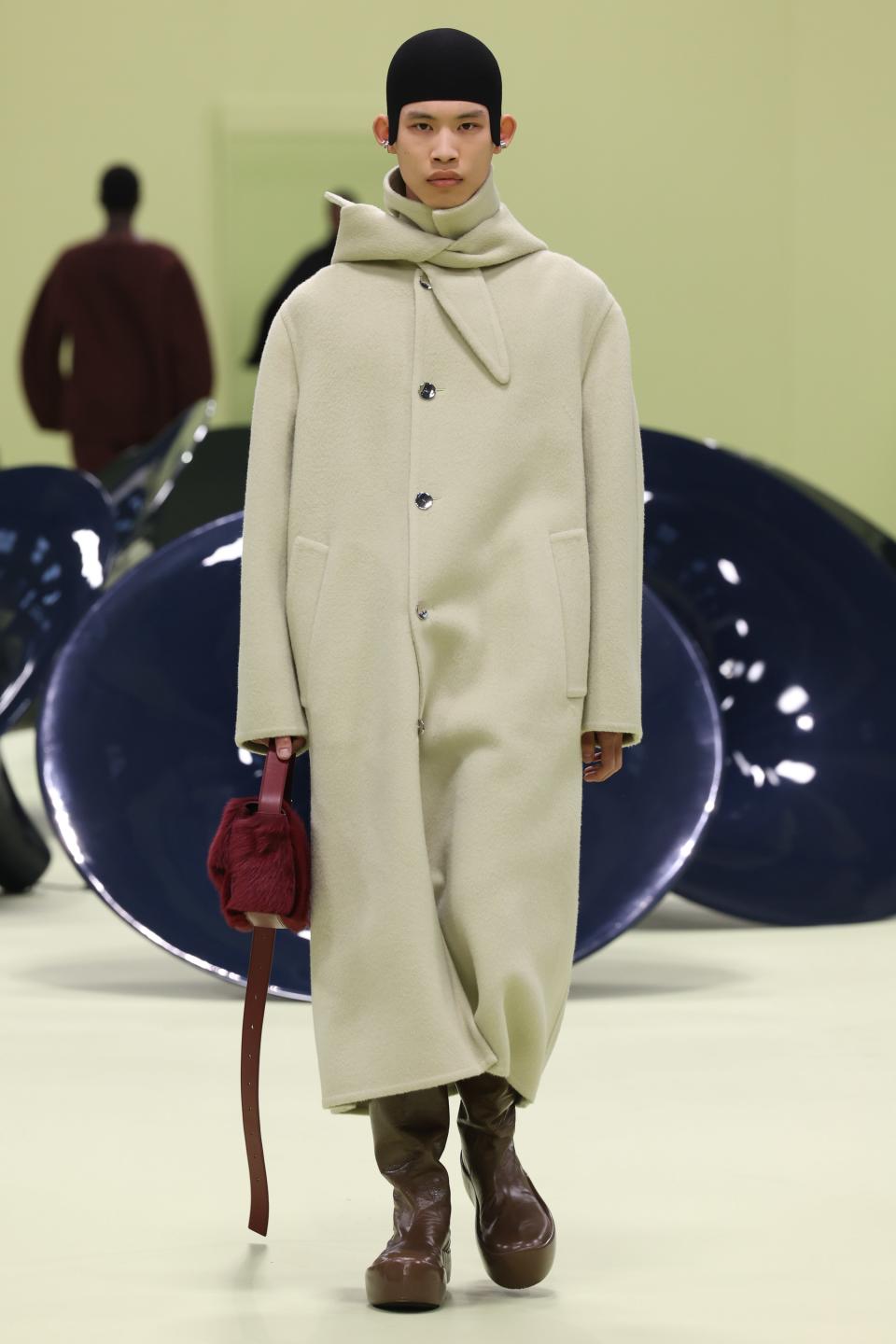
Jil Sander - Runway - Milan Fashion Week - Womenswear Fall/Winter 2024-2025
Milan is clearly—and thankfully—moving away from the safe, commercial moves of seasons past. I could count on one hand the number of sneakers I saw last week, while at Marni rubbery clown shoes were the order of the day. Most strikingly, several designers shod men in bitchy thigh-high boots, worn with tuxedo jackets at Versace and military parkas at Ferragamo, and even with jeans and a jumper at Bally, where Simone Bellotti proved that his excellent debut last season was no fluke—the Gucci veteran clearly has what it takes to turn the sleepy Swiss house around.
The consensus is that despite Milan’s lack of upstart menswear names, there is still a legitimate shift underway. There is actually no shortage of bright young designers in town. But for the most part they’re not indie talents. They’ve instead settled in at some of the town’s biggest brands, and are contributing to the revival of a legitimate local fashion scene. Unlike the designer-tycoons whose family names are festooned around Milan, the bumper crop of buzzy creative directors in town “are common people,” my GQ Italia colleague Francesco Martino told me, citing Maximilian Davis at Ferragamo, Matthieu Blazy at Bottega Veneta, and Francesco Risso at Marni. “What they do is super smooth and natural and close to the person that they are.”
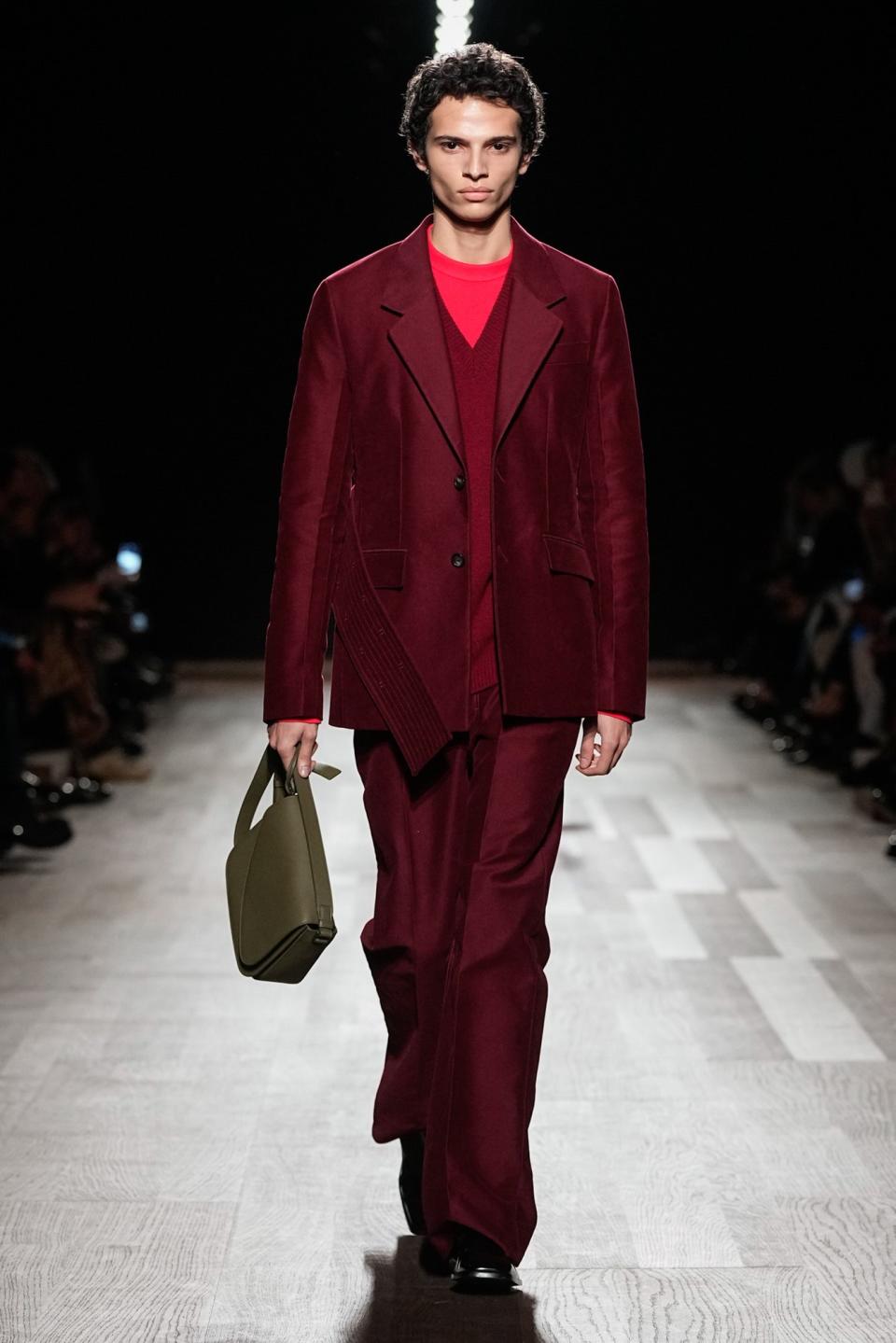
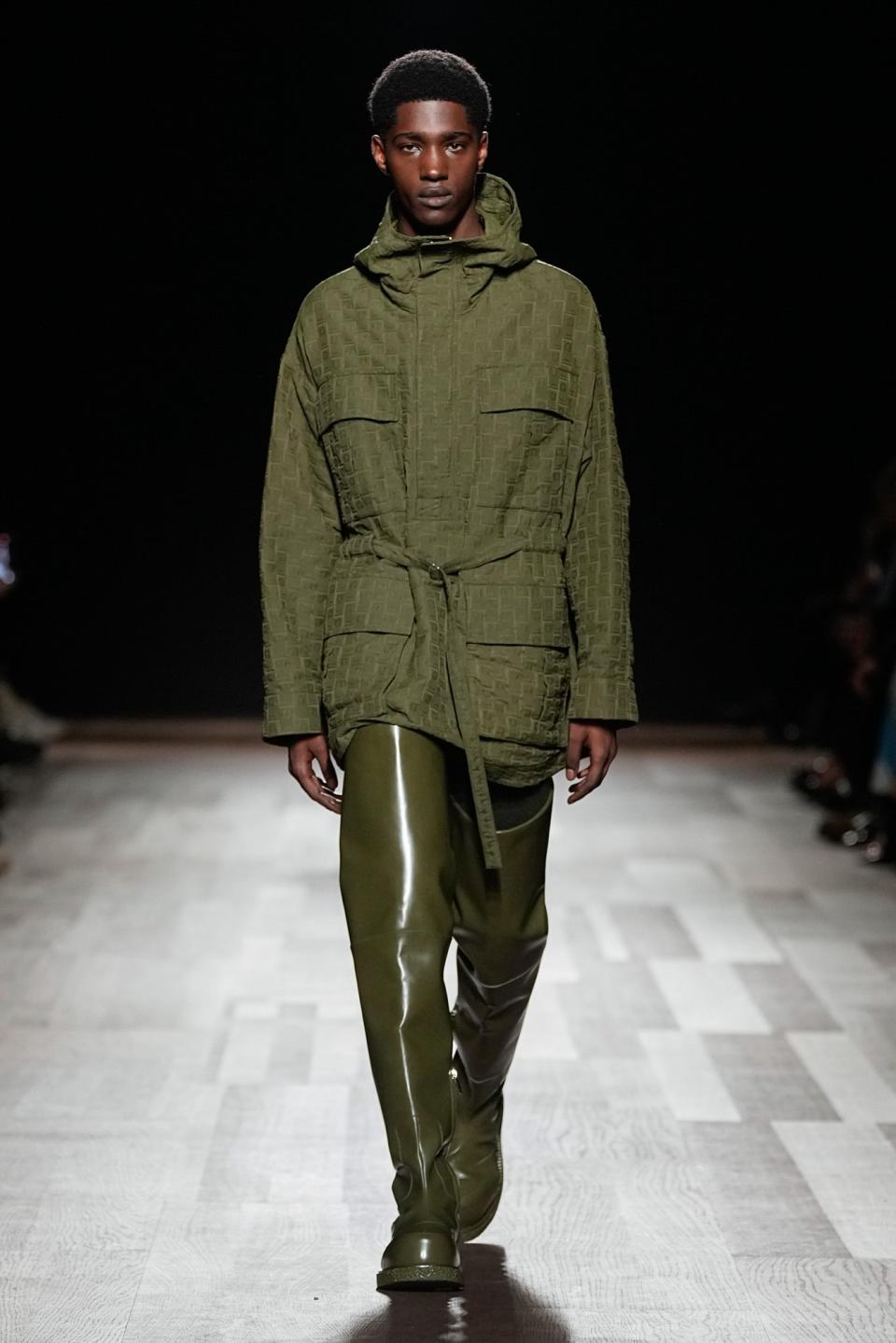
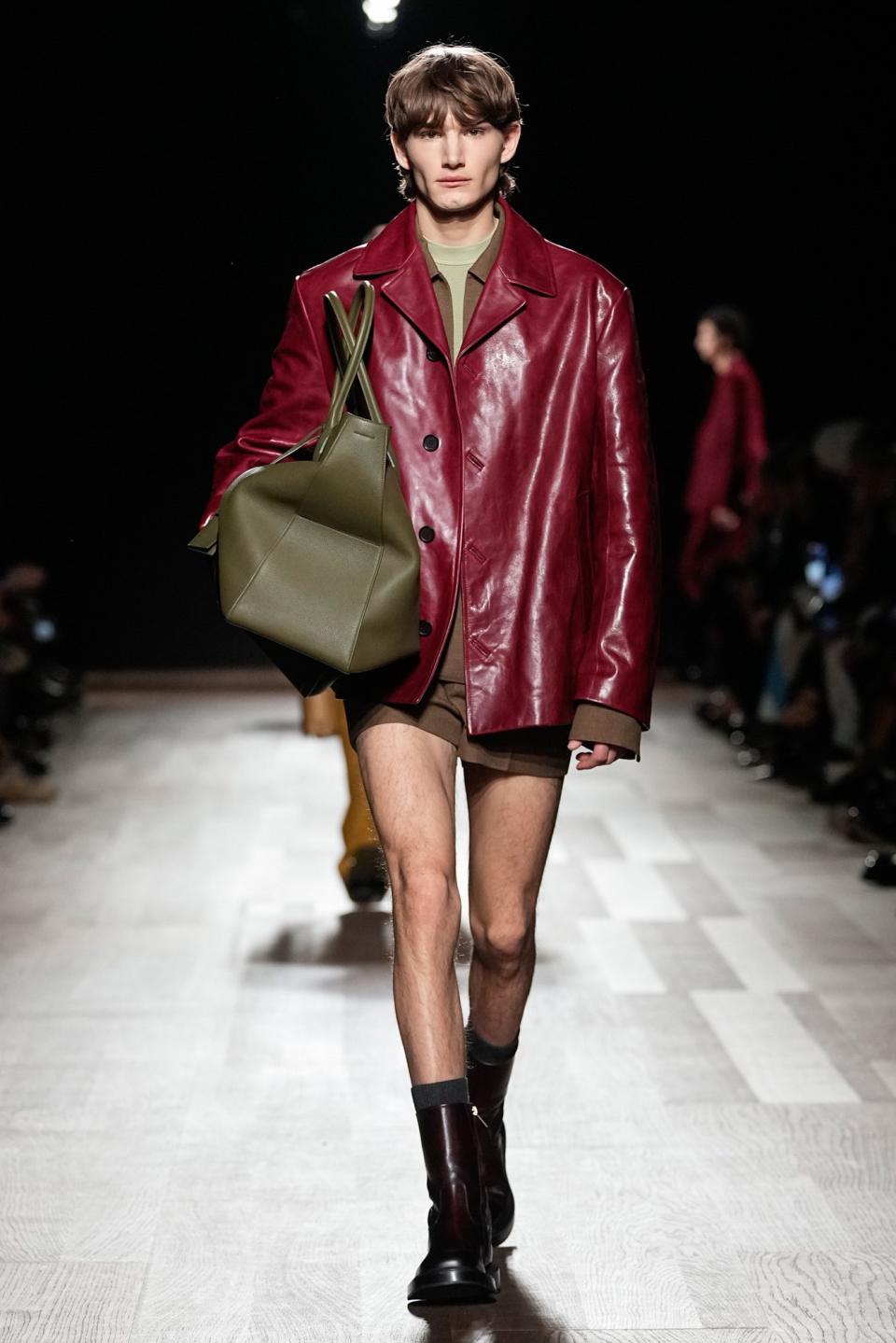
Davis, Blazy, and Risso make very different work, but they are deeply embedded in international creative communities and also have strong local links. One local told me he had seen the Blazy more times in the past few weeks than his own friends; the French and Belgian native frequents Bar Quadronno, a neighborhood paninoteca that serves as a watering hole for Milan’s art and design crowd. Blazy even named a Bottega bag after the spot.
Of course, it’s a generational thing. Back in the day, Miuccia Prada was a Quadronno regular, too. (When she opened the Wes Anderson-designed Bar Luce at the Fondazione Prada, she’s reputed to have had the new staff train with Quadronno’s panini artists for months.) But it’s been a while since Milan’s creative establishment has, you know, hung out. Mrs. Prada, Donatella Versace, Giorgio Armani, Domenico Dolce, Stefano Gabbana—all are very rich, very famous, and range from fairly to very old. Which hasn’t done anything to help Milan Fashion Week beat its reputation as being too commercial and traditional.
I don’t want to overstate the importance of designers spending time at bars, but I do think it speaks to the dynamism of Davis, Blazy, and Risso’s recent collections. Their clothes and shows and brand universes have an almost organic quality, an openness to the kinds of surprising new ideas that emerge through collaboration. And in turn they are contributing to Milan’s rebound as a genuinely exciting fashion hub.
At Marni, Risso’s touch was quite literally manifest in the clothes, like a group of stunning leather frocks, coats, and jeans painted all over with wavy brushstrokes: call it Marn-pressionism. In a preview before the show, Risso told me that he and his team had constructed a paper cave (yes) in the Marni studio to remove distractions as they designed the collection; he had also banished reference images and mood boards. “We realized that the departure from references kind of allowed instinct to be alive,” he told me. There was a primal vibe throughout, most evident in leopard-print tunics fit for Fred Flinstone. For Risso, the process is as important as the final product, and both reflect the contributions of the merry pranksters he’s brought into his kooky universe, like the deeply original stylist Carlos Nazario, and the equally inspired composer Dev Hynes, who is behind the crazily ethereal show soundtracks. The non-model specialists at Midland take care of the singular and funky casting, which was the best of the week. Risso’s friend Hillary Taymour of Collina Strada told me recently that Marni reminds her of an experimental downtown NYC brand more than anything. I’d add that the only difference is Marni has real resources: the large venue for Friday’s show was completely papered over, just like the studio. Held in the cave, the afterparty had a real Bushwick rave feel to it. And it’s clearly connecting in Marni’s home town. “Literally every single person I know in Milan is going to the Marni party,” said a local friend who knows a lot of people.
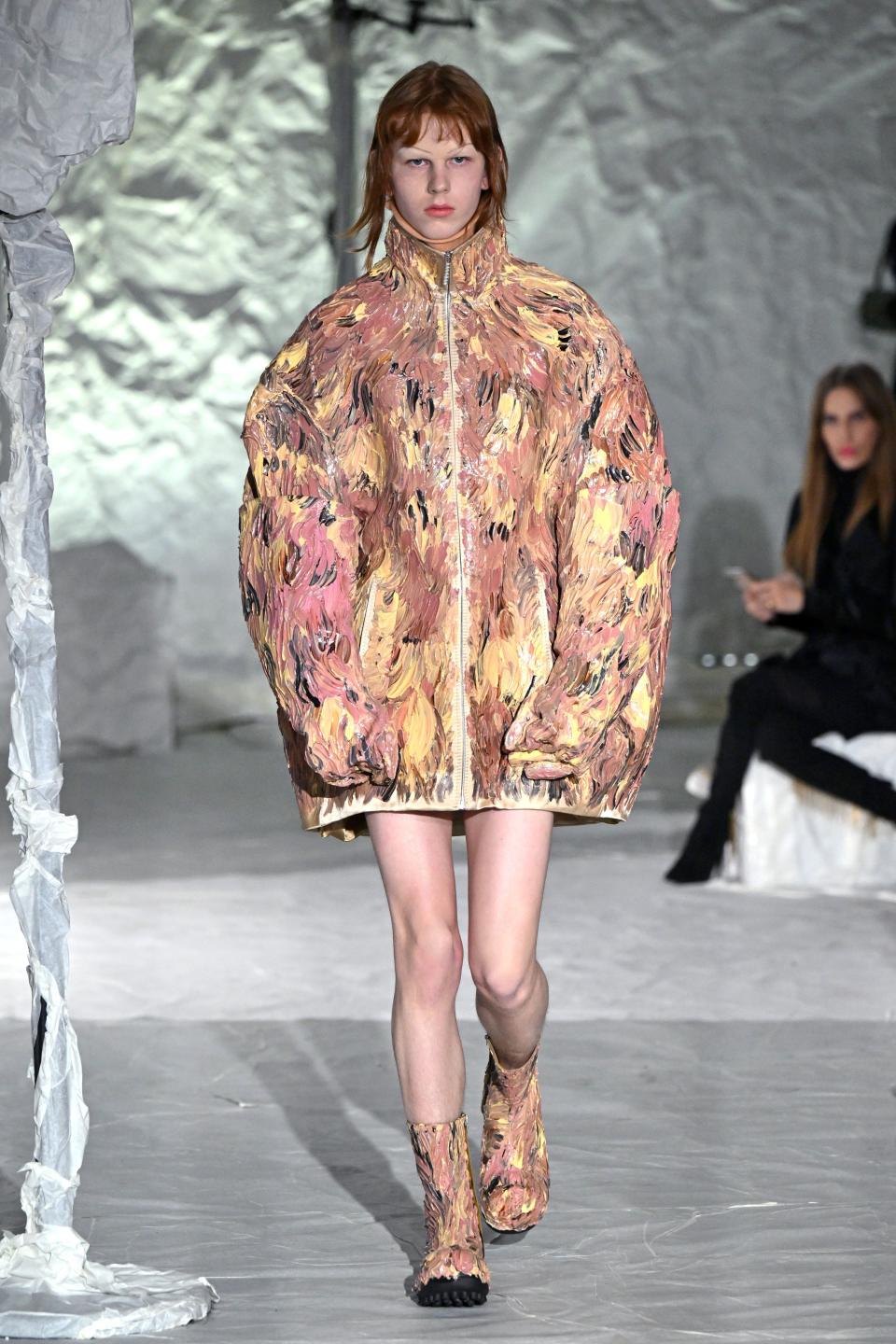
Marni - Runway - Milan Fashion Week - Womenswear Fall/Winter 2024-2025
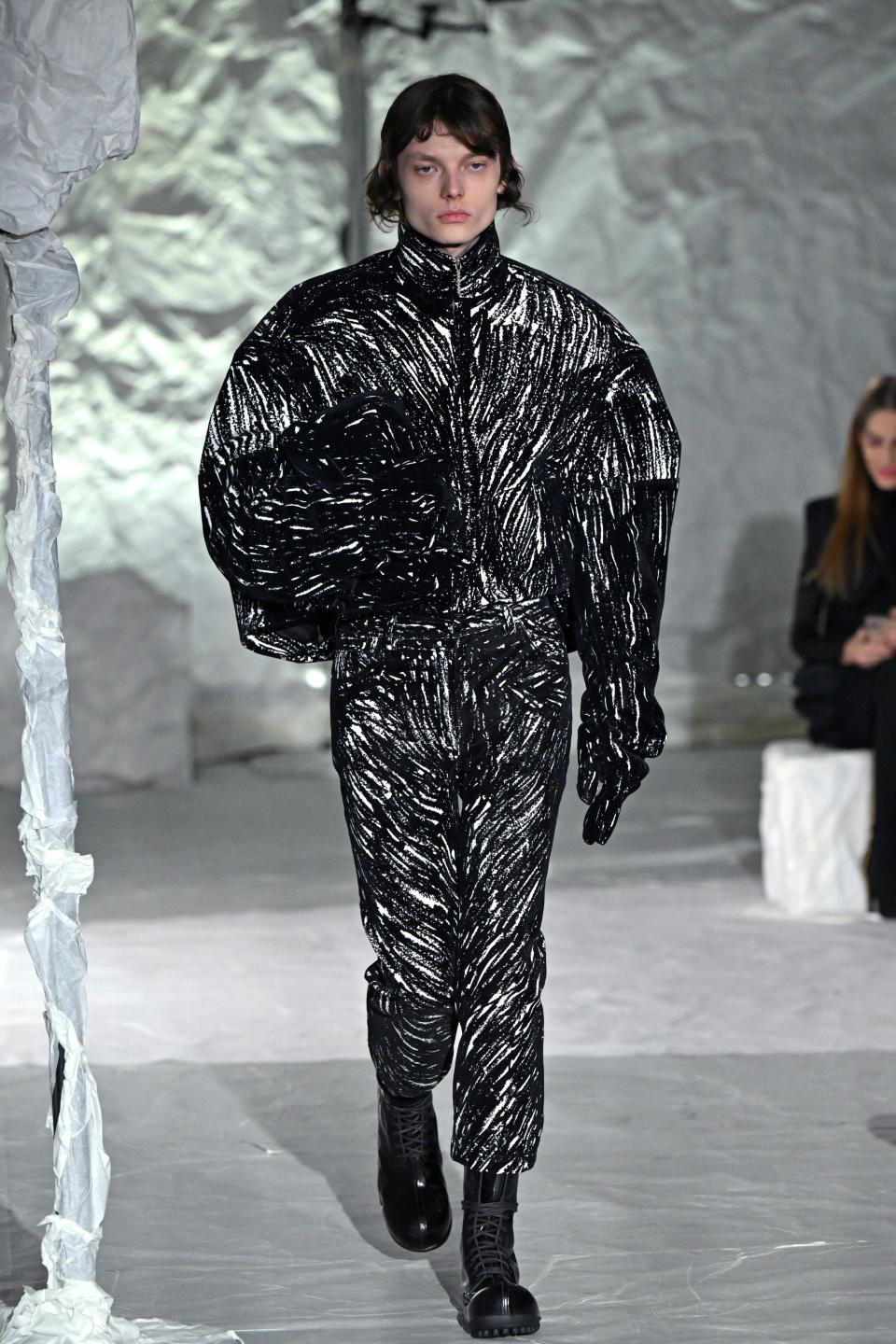
Marni - Runway - Milan Fashion Week - Womenswear Fall/Winter 2024-2025
Marco M. Mantovani/Getty ImagesAt Ferragamo on Saturday morning, Maximilian Davis delivered a focused and clear idea for men centered around heavy melton wool overcoats with thick belts unbuckled around the waist. Backstage the 28-year-old Manchester native explained that those “military utilitarian details” had been sourced from his fascination with the style of the 1920s. Through the show the coats became blazers and formal jackets; the proportions continued to shrink with chunky knit cardigans and camp shorts in Prada-ish off-colors. The styling helped the simple men’s silhouettes stand out, with refreshingly clashy contrasts breaking up this season’s parade of dull monochrome, and silhouettes that played chunky sweaters off of teeny-tiny camp shorts. The thigh-highs, meanwhile, were treated with subtlety. Backstage, I spotted the veteran stylist Lotta Volkova, whose work with Balenciaga and lately Miu Miu has turned “real” style archetypes into the height of fashion. Davis brought her in for the first time this season, and I hope their collaboration continues. Like Risso, Davis knows that his crew—which also includes the likes of Paloma Elsesser, Paul Hameline, and fashion consultant Zainab Jama, all of whom walked in the show—makes the world around the clothes, and thus the clothes themselves, much more interesting. His afterparty was, fittingly, at a small local bar.
Matthieu Blazy capped off the co-ed parade on Saturday night before a crowd that included Bottega boys A$AP Rocky, James Blake, Jeremy O. Harris, and Antwaun Sargent, mega-famous artists alongside culture-shifting playwrights and writers. On the runway, he brought the artisanal excess of previous seasons down to earth. "I was interested in that idea of making a monument out of the everyday,” he said backstage. It was dressy but not formal—Blazy described the idea of wearing daywear at night when walking his dog. It was also reacting to Blazy “watching the news in the world we live in,” he said. Dense fabrics were stripped of ornament and shaped into imposing forms that projected strength, or what the designer described as “resilience.” If that sounds a tad dark, it was, especially presented in an haute-pocalyptic scene of burnt wood and murano glass cacti. But it wasn’t all gloomy. Fine grids woven into tailoring and drawn across a leather trench, Blazy said, were “like notebooks, expressing the idea of a possible future. So it’s about hope in the end.” It was his most personal and affective collection, one that still contained plenty of surprises, like a few muscular knits that I saw Rocky taking photos of.
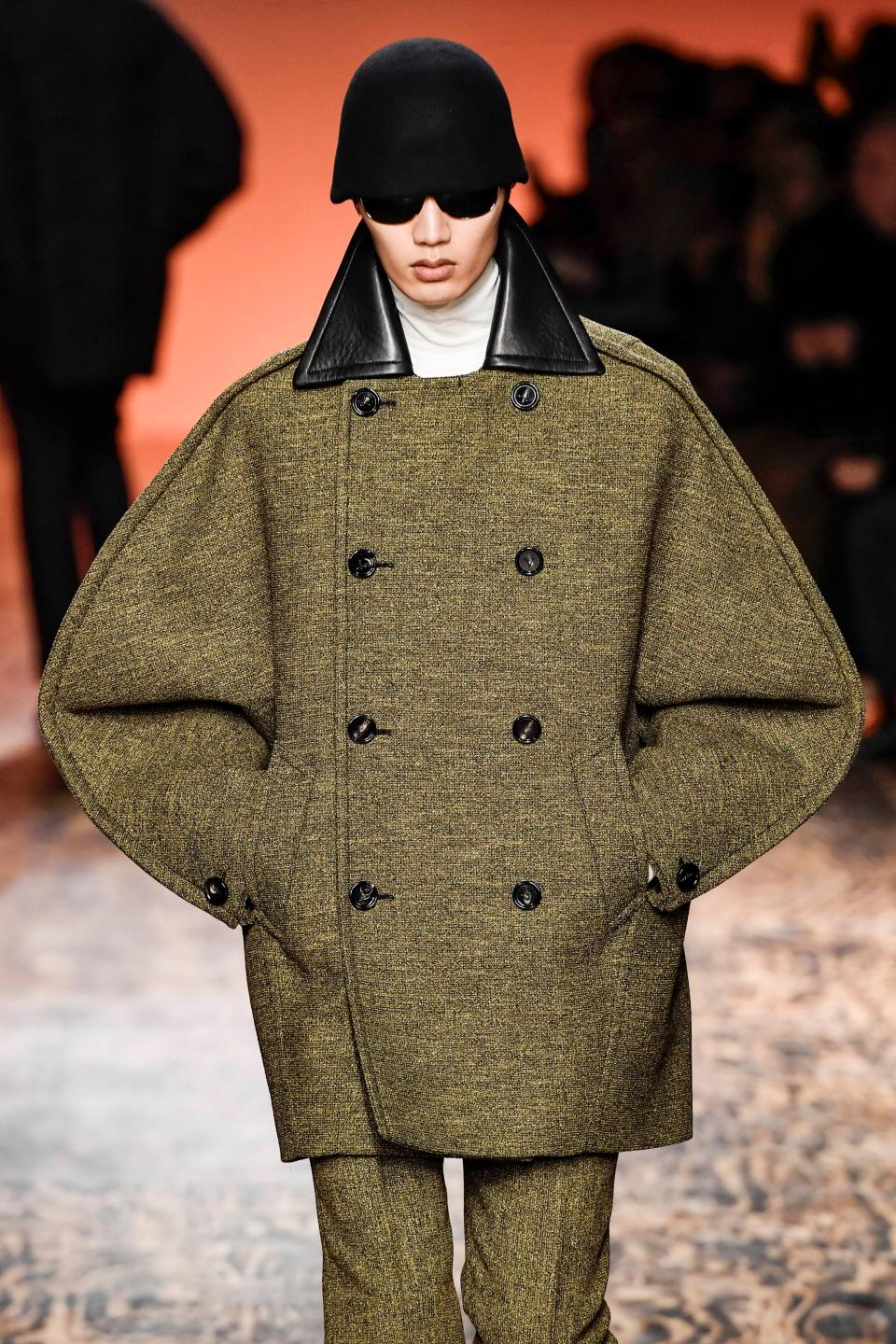
Bottega Veneta - Runway - Milan Fashion Week Fall/Winter 2024-2025
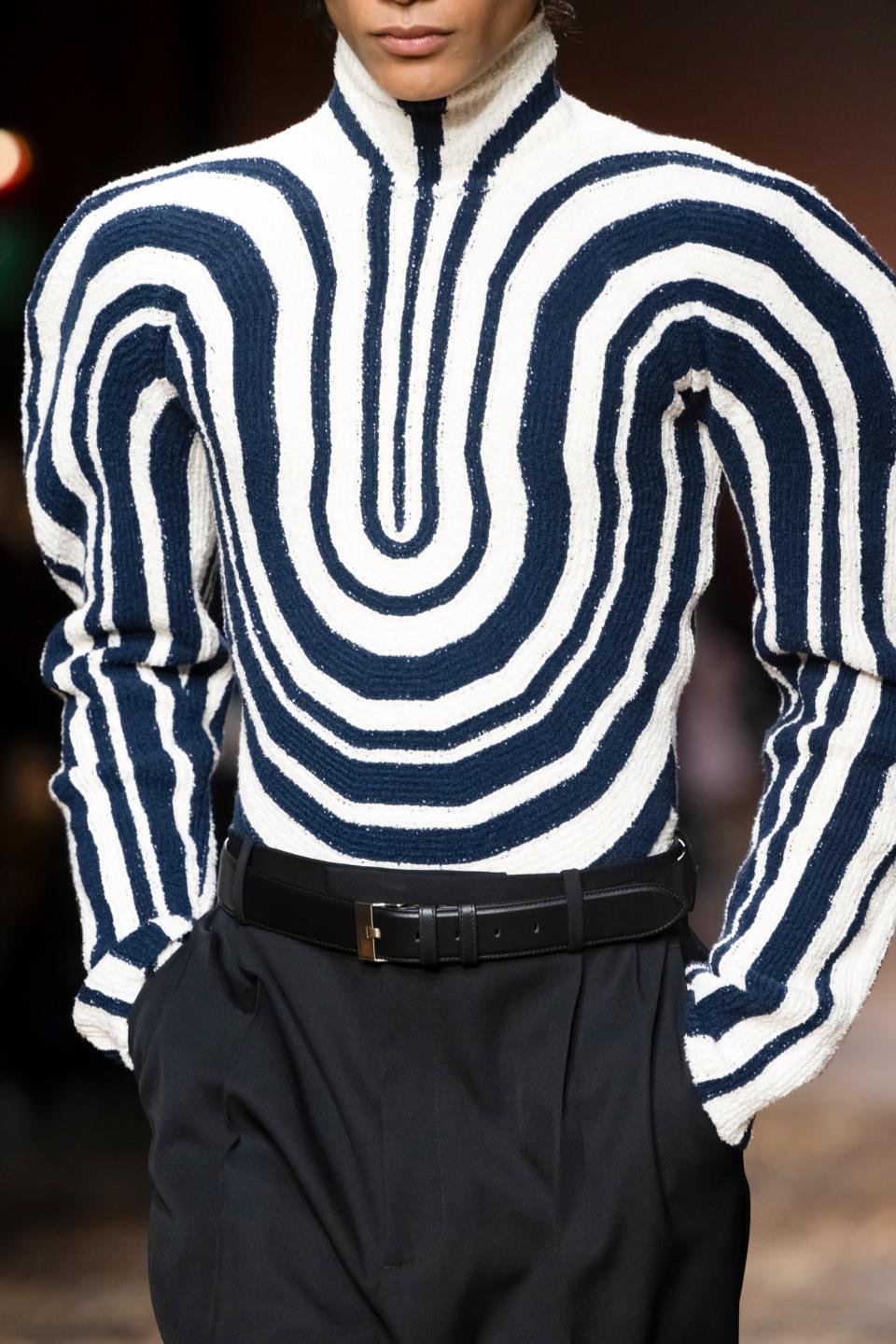
Bottega Veneta - Runway - Milan Fashion Week Fall/Winter 2024-2025
Victor VIRGILE/Getty ImagesAnother sign that something special is happening in Milan came back at Sunnei, where I was surprised to find Gucci’s new creative director Sabato De Sarno sitting a few spots down from me. It’s not rare these days to see designers at each others’ events; Prada co-creative director Raf Simons has attended, I think, every one of his protegé Blazy’s Bottega shows. But De Sarno’s sophomore Gucci women’s show had concluded literally one hour before Sunnei. One could have forgiven him for beelining straight to Quadronno for a glass of prosecco. But, as he told me while we waited for the show to begin, he instead rearranged his whole schedule to be there. “It’s important to me to support other young designers,” he said. (De Sarno himself is barely in his 40s.) “I don’t want to just talk about supporting them. I want to actually go to the show.”
Milan is still the place to go for tailoring and uber-refined classic menswear. But it’s now clear that, within those codes, there’s no shortage of innovation and excitement. The next-gen fashion stars who call the city home are, together, turning things around, one carpet coat at a time.
See all of our newsletters, including Show Notes, here.
Originally Appeared on GQ

